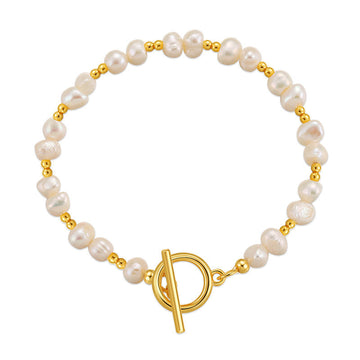The Porosity and Enhancement Treatments of Turquoise Bracelets: A Comprehensive Analysis
Turquoise, a phosphate mineral cherished for its striking blue-green hues, has been a staple in jewelry-making for centuries. When crafted into bracelets, its durability and aesthetic appeal depend heavily on two factors: its porosity (often referred to as "瓷度" or "hardness" in Chinese contexts) and whether it has undergone enhancement treatments. Understanding these aspects is essential for evaluating the quality and authenticity of turquoise, ensuring that wearers and collectors make informed choices about their pieces.
1. Porosity in Turquoise: The Foundation of Durability and Color Stability
Porosity, or the degree to which turquoise is permeable to liquids and gases, is a critical determinant of its suitability for bracelets. Highly porous turquoise absorbs oils, sweat, and chemicals easily, leading to discoloration, surface damage, and a dull appearance over time. In contrast, low-porosity turquoise, often described as having high "瓷度," is denser and more resistant to environmental factors, making it ideal for daily wear. The porosity of turquoise is influenced by its mineral composition and formation process.
Geological Factors Affecting Porosity
Turquoise forms in arid environments where copper-rich groundwater interacts with aluminum and phosphorus minerals. The presence of impurities such as clay, quartz, or iron oxides during crystallization can increase porosity by creating microscopic gaps within the stone. Conversely, turquoise that forms under slower, more stable conditions tends to be denser, with fewer internal voids. Stones from certain regions, like the Sleeping Beauty mine in Arizona, are known for their naturally low porosity and vibrant color, making them highly prized for bracelets.
2. Common Enhancement Treatments for Turquoise Used in Bracelets
Due to the rarity of high-quality, naturally low-porosity turquoise, many stones undergo enhancement treatments to improve their appearance and durability. These treatments range from surface coatings to bulk stabilization, each with implications for the stone’s long-term performance and value.
Stabilization: Strengthening Porous Turquoise
One of the most widespread treatments is stabilization, which involves impregnating the stone with a clear resin or plastic under pressure. This process fills microscopic pores, reducing porosity and enhancing hardness. Stabilized turquoise is less likely to absorb liquids or suffer from color changes, making it more practical for bracelets. However, some collectors view stabilized stones as less valuable than untreated ones, as the treatment alters their natural state.
Dyeing and Reconstitution: Altering Color and Appearance
Lower-grade turquoise, often pale or streaked with brown matrix, may be dyed to mimic the vibrant hues of higher-quality stones. Common dyes include blue and green pigments that penetrate the stone’s surface, though these can fade over time or under prolonged exposure to sunlight. Reconstituted turquoise takes this a step further by grinding natural turquoise scraps into a powder, mixing them with resin and dye, and compressing the mixture into solid blocks. While reconstituted stones are durable and affordable, they lack the authenticity of natural turquoise and are generally considered a manufactured material.
3. Identifying Natural vs. Treated Turquoise in Bracelets
Distinguishing between natural and treated turquoise requires careful observation and sometimes advanced testing. Natural turquoise often exhibits subtle variations in color and texture, with visible veins or matrix patterns that reflect its geological formation. Treated stones, by contrast, may have an overly uniform color or a plastic-like sheen, indicating resin stabilization or dyeing.
Visual and Physical Indicators of Treatment
A simple test for stabilization involves heating a needle and gently touching an inconspicuous area of the stone. If the stone is stabilized, the resin may melt or emit a chemical odor, though this method requires caution to avoid damaging the piece. Another indicator is the stone’s weight: stabilized or reconstituted turquoise often feels heavier than natural stone of the same size due to the added resin. Under magnification, treated turquoise may show signs of dye concentration around pores or a granular texture from reconstituted material.
The Role of Certification and Ethical Sourcing
For those seeking natural turquoise bracelets, certification from reputable gemological laboratories can provide assurance of authenticity. These certificates detail whether a stone has been treated and to what extent, helping buyers make informed decisions. Ethical sourcing is also a growing concern, as some turquoise mines operate under environmentally harmful conditions or involve labor practices that raise ethical questions. Supporting miners and suppliers who prioritize sustainability and fair trade ensures that the beauty of turquoise is not marred by its environmental or social impact.
4. Caring for Turquoise Bracelets: Maintaining Beauty Over Time
Regardless of whether a turquoise bracelet features natural or treated stones, proper care is essential to preserve its appearance. Due to its sensitivity to chemicals, turquoise should be removed before swimming, cleaning, or applying cosmetics. Avoid exposing the stone to extreme temperatures or direct sunlight for prolonged periods, as this can cause fading or cracking.
Cleaning and Storage Recommendations
To clean a turquoise bracelet, use a soft, damp cloth and mild soap, gently wiping away dirt or oils. Avoid ultrasonic cleaners or harsh chemicals, which can damage the stone or strip away surface treatments. When storing the bracelet, wrap it in a soft cloth or place it in a separate compartment to prevent scratches from harder gemstones or metals. For stabilized turquoise, occasional reapplication of a thin wax or oil coating can help maintain its luster, though this is unnecessary for natural, low-porosity stones.
A Gemstone of Cultural and Geological Significance
Turquoise’s allure lies in its vibrant color and rich history, spanning ancient civilizations to modern jewelry design. From its formation in copper-laden earth to the skilled craftsmanship that transforms it into bracelets, every stage of turquoise’s journey reflects the interplay of natural forces and human artistry. By understanding porosity and enhancement treatments, wearers and collectors can appreciate the stone’s true value, whether it is a natural treasure or a beautifully enhanced creation. As trends evolve and ethical considerations grow, turquoise remains a timeless choice, embodying both the Earth’s raw beauty and the ingenuity of those who shape it into wearable art.







